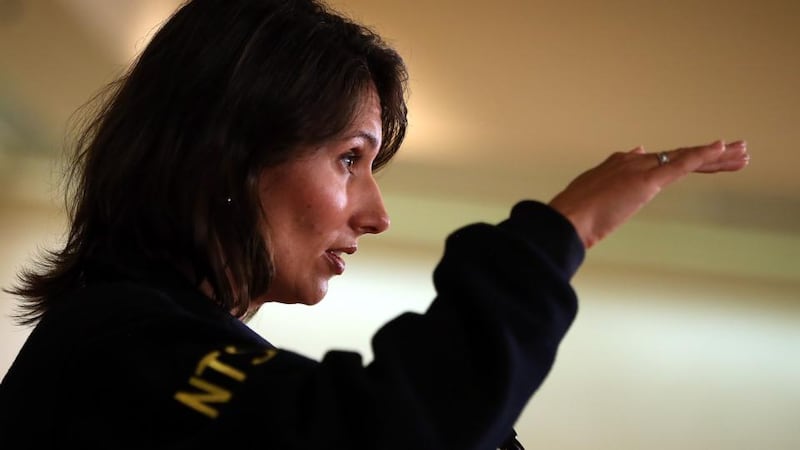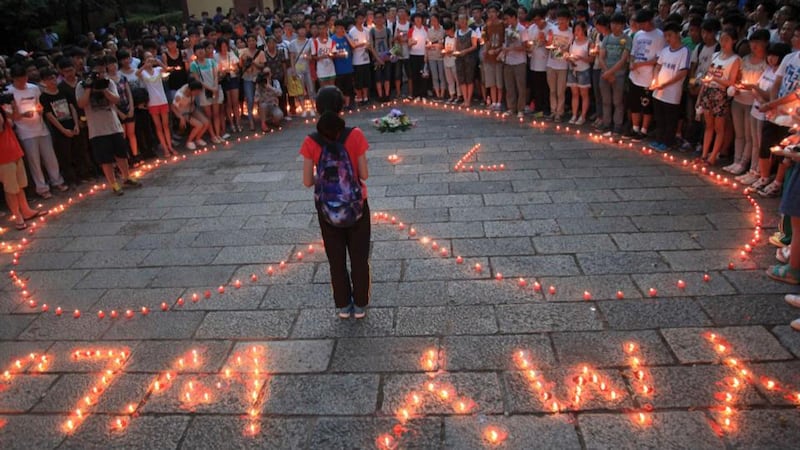The evacuation of Asiana Airlines Flight 214 was delayed for 90 seconds after the plane crash-landed at San Francisco airport because the pilots initially told flight attendants to keep passengers in their seats, US investigators have said.
US National Transportation Safety Board chairman Deborah Hersman, describing the scene in a briefing yesterday, said the situation changed after a flight attendant reported seeing fire outside the cabin.
At that point, two of the 12 attendants were pinned by emergency chutes that went off inside the cabin and three others had been ejected from the plane on impact. “What we saw here is that the first slides weren’t opened for about 90 seconds,” Ms Hersman said.


Aircraft manufacturers must demonstrate to regulators that a full load of passengers can be evacuated from a plane in that same time. All but two of the 307 people on board survived the July 6th crash-landing in San Francisco, the first fatal airline accident in the US since 2009.
It was Seoul-based Asiana's first crash since a Boeing 747 cargo plane went down at sea in July 2011.
The evacuation began after a senior flight attendant seated near the plane’s second set of doors saw fire beginning near where the right engine came to rest, Ms Hersman said.
Fire didn’t reach the cabin until most of the people were outside, she said. After saying yesterday that two flight attendants were flung outside the plane, Ms Hersman yesterday said the number was three.
They were among four attendants seated in the plane’s rear. Guiding Passengers “Three of those flight attendants and their seats were ejected from the aircraft,” she said. The fourth remained inside the plane. All four were hospitalised and have not yet been interviewed, she said.
Other flight attendants joined pilots in trying to fight the fire advancing toward the fuselage while guiding passengers to exits as police and firefighters arrived on the scene.
The first fire crews arrived two minutes after the accident, 30 seconds after the evacuation started, she said. They began dousing the fire a minute after their arrival.
On the pilots’ decision to delay the evacuation, Ms Hersman said pilots sometimes want to wait for emergency crews to arrive to help passengers evacuate safely. “The pilots are in the front of the airplane,” she said. “They really don’t have a good sense of what’s going on behind them.”
Lee Kang Kuk, a veteran pilot who was transitioning to the Boeing 777 after flying smaller jets, was at the controls of Flight 214 on approach under the supervision of a senior management pilot making his first flight as a trainer, according to the NTSB.
A third pilot, seated at the rear of the cockpit, warned the crew about their altitude on the approach, Ms Hersman said.
He told investigators he called out “sink rate,” an indication that the plane was descending too rapidly, she said. Investigators are trying to determine how the pilots set the auto-throttle and whether it worked properly.
The device flies the plane at a speed selected by pilots and has built-in functions to keep the aircraft from slowing too much. While the initial investigation shows it was “armed,” the NTSB doesn’t yet understand how it was set and how the plane could have slowed.
The plane slowed to almost 40 miles (64km) per hour below its target speed before hitting the seawall short of the runway, Ms Hersman has said.
Stall Warning
The speed fell as the aircraft neared the runway, dropping below the target landing speed of 158 mph. It got as low as 119 mph three seconds before impact. The jet slowed so much that a cockpit warning of an impending aerodynamic stall sounded four seconds before it crash-landed.
Airline rules require pilots to abort a landing if a plane isn’t set up properly before a landing. Boeing suggests that pilots abandon a landing attempt if a plane isn’t on a path to the runway and at the correct speed at an altitude of 500 feet, according to guidelines on its website.
The Asiana pilots didn’t attempt to abort the landing until 1 1/2 seconds before impact, Ms Hersman said earlier this week.
The pilot flying the 777 said he saw a flash of light at an altitude of about 500 feet as he approached the runway, Ms Hersman said.
That was the altitude at which the pilots have told investigators they realized the plane was coming in too low. “We really don’t know at this point what it could have been,” she said, calling its effects temporary. She declined to say whether it may have been a laser pointer, an increasing hazard for pilots landing at major airports.
“We need to look into it.”
Bloomberg














